
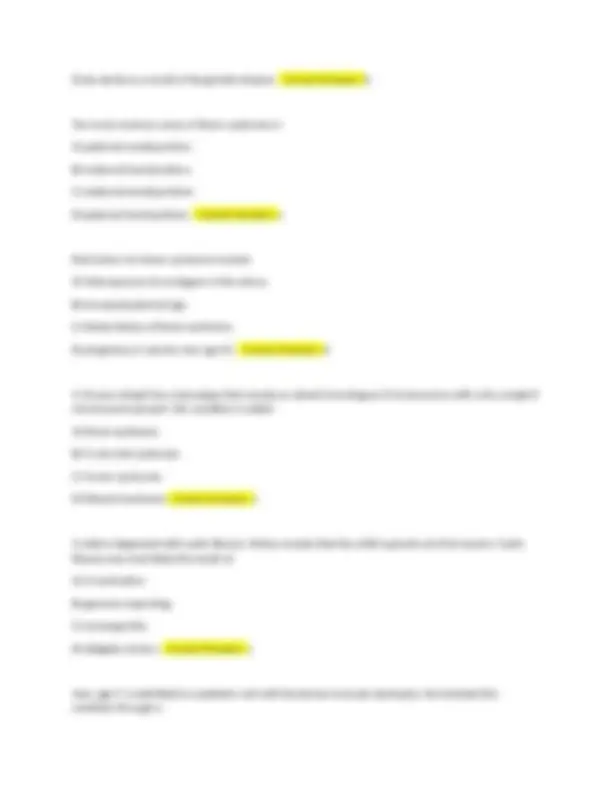
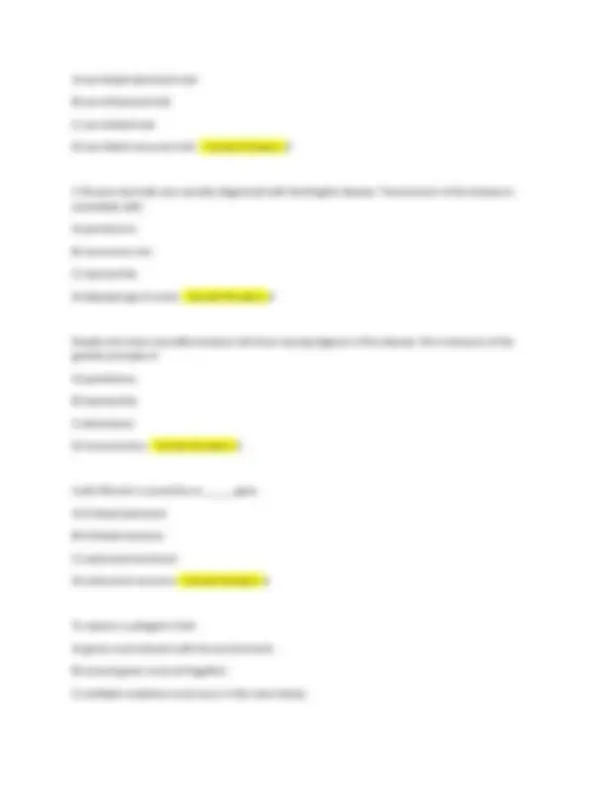
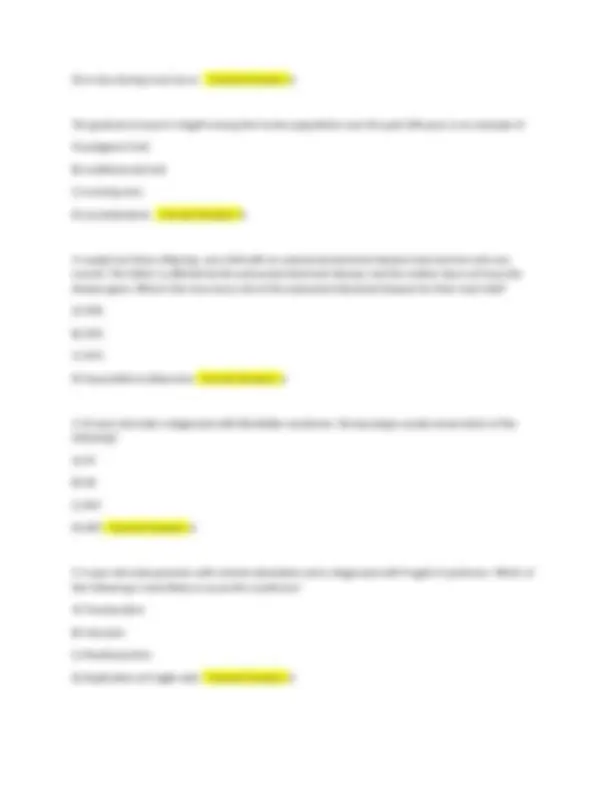
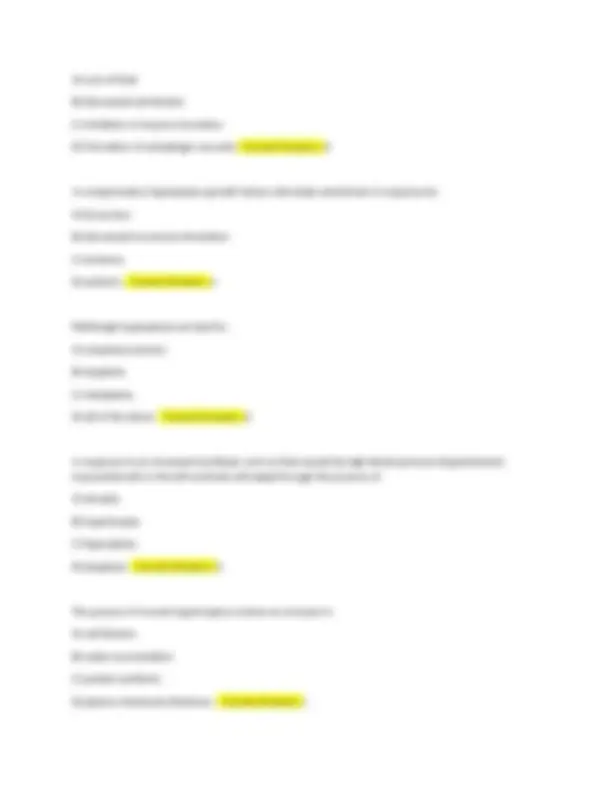
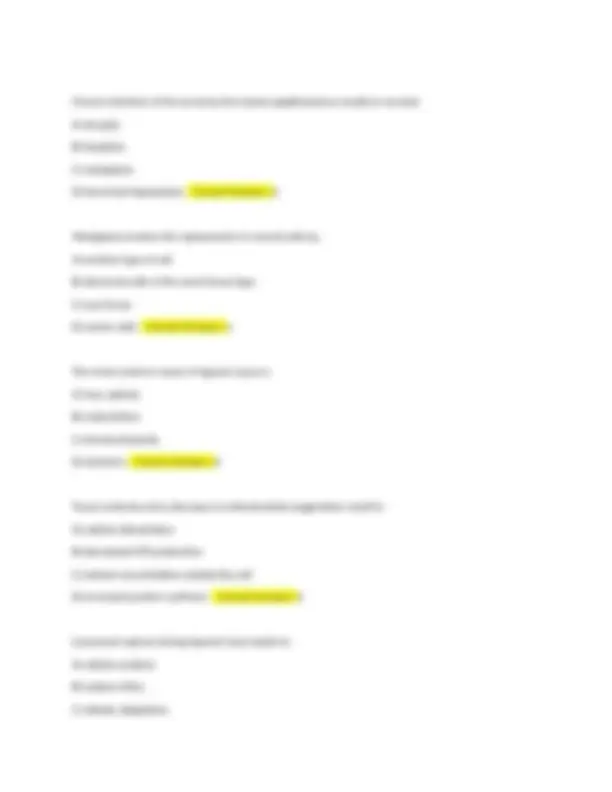
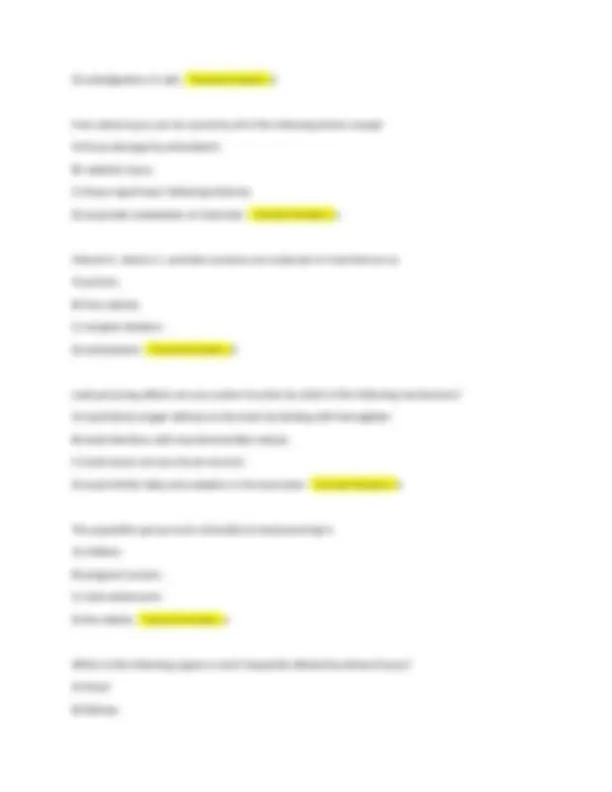
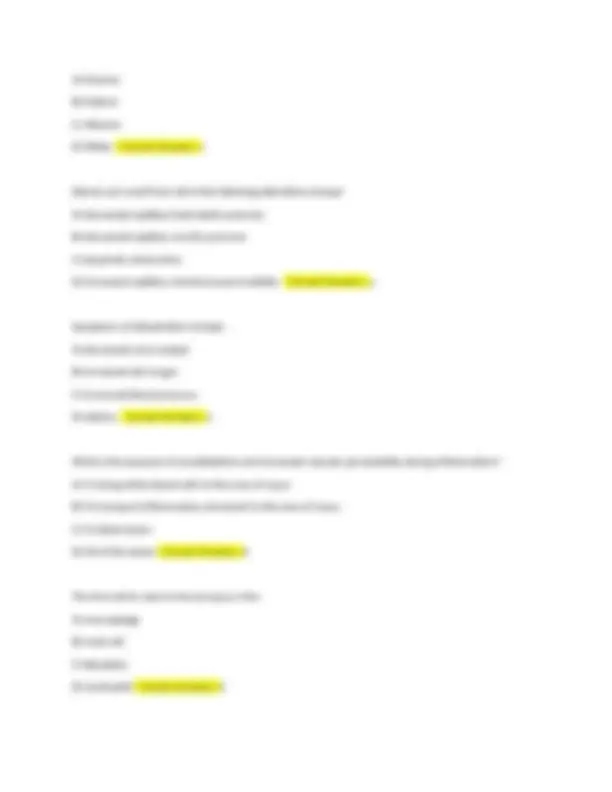
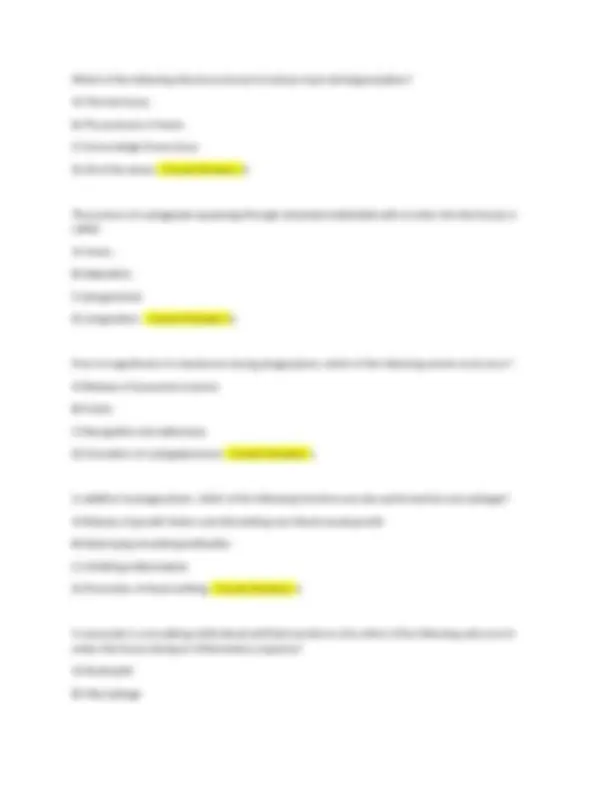
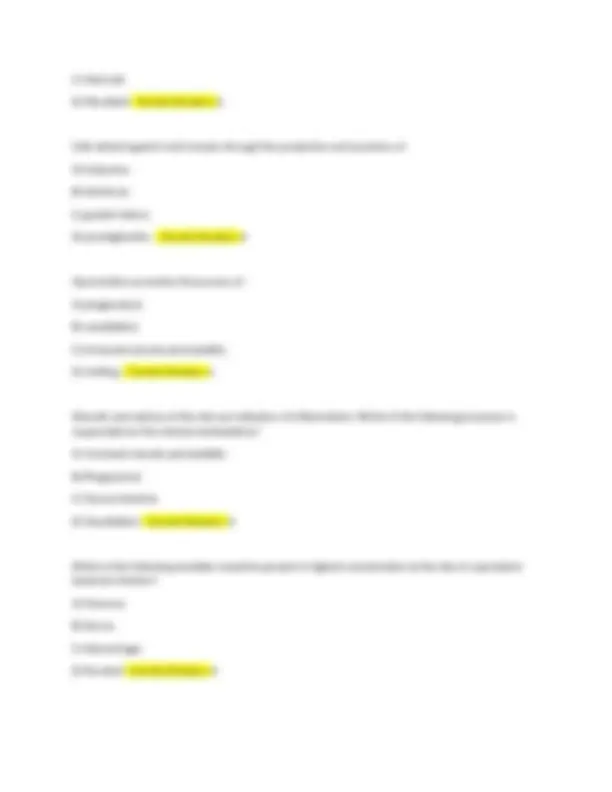
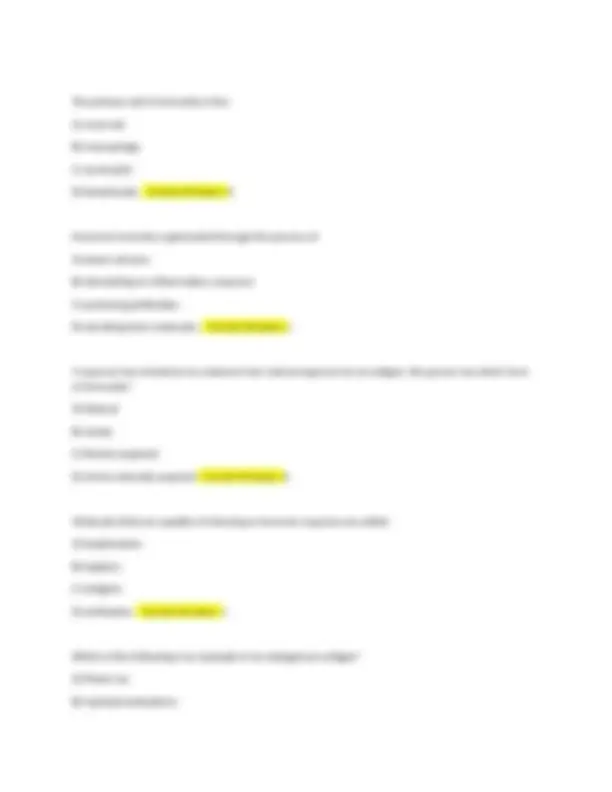
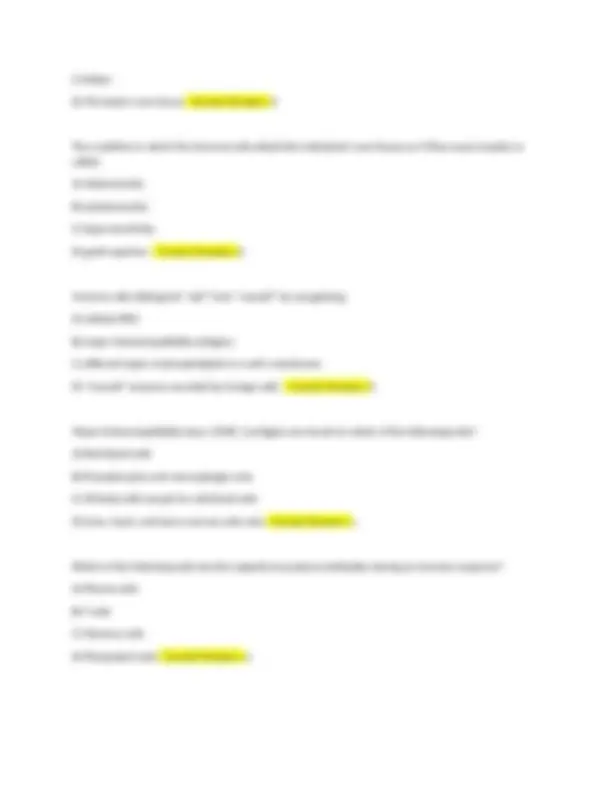
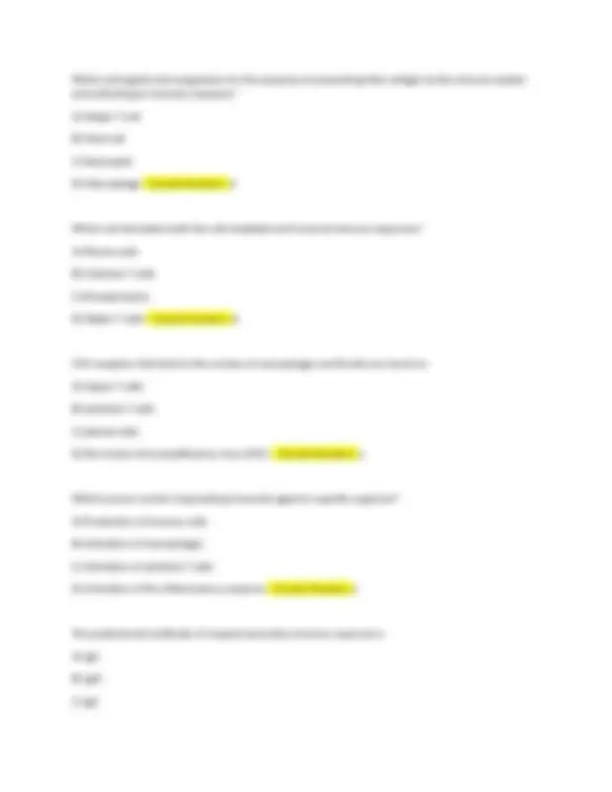
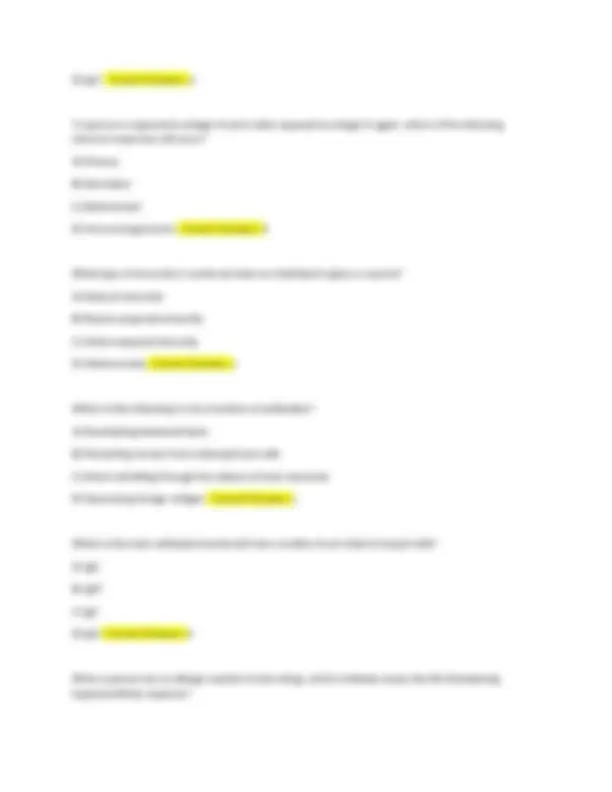
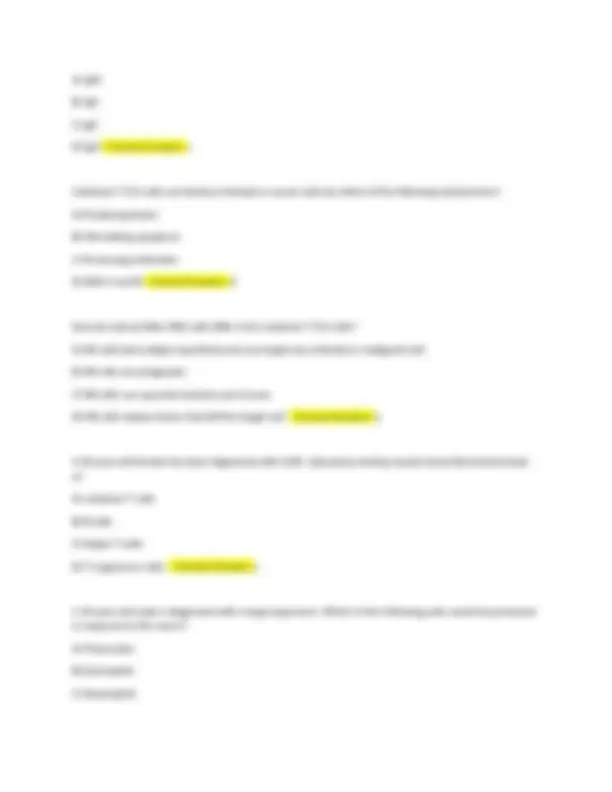
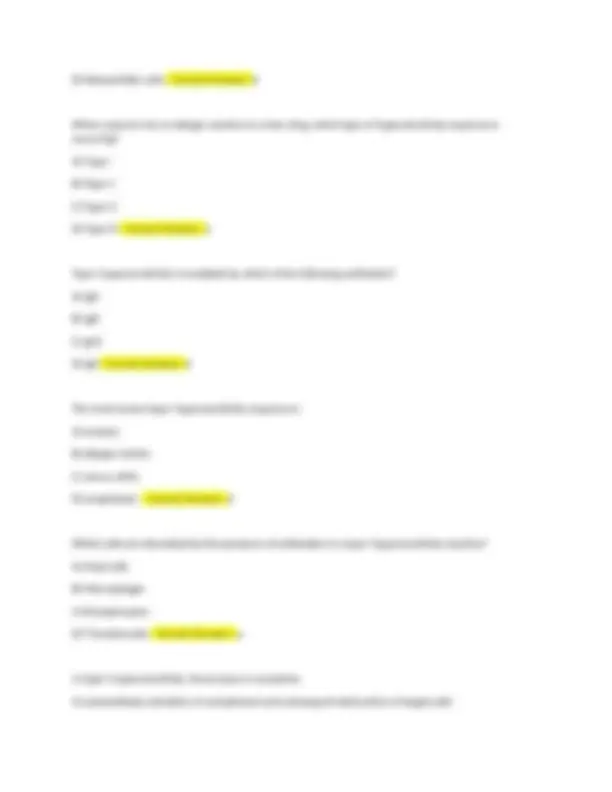
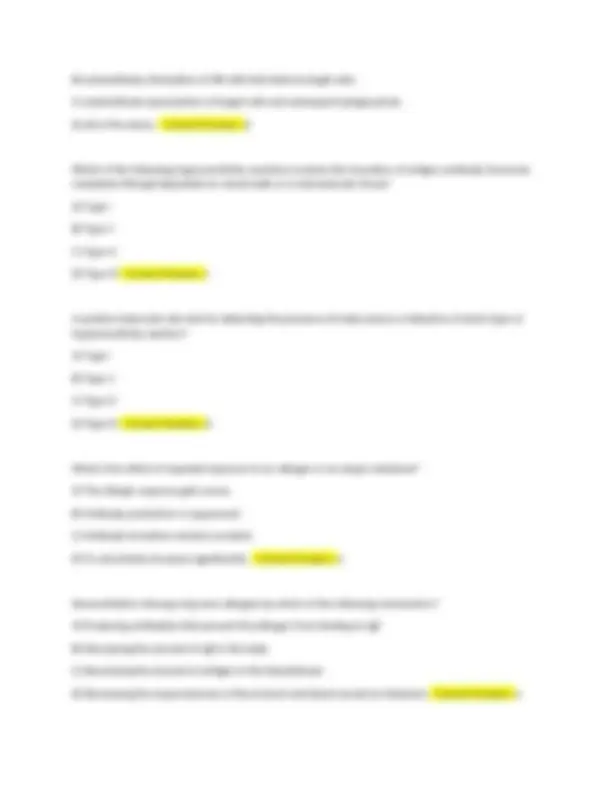
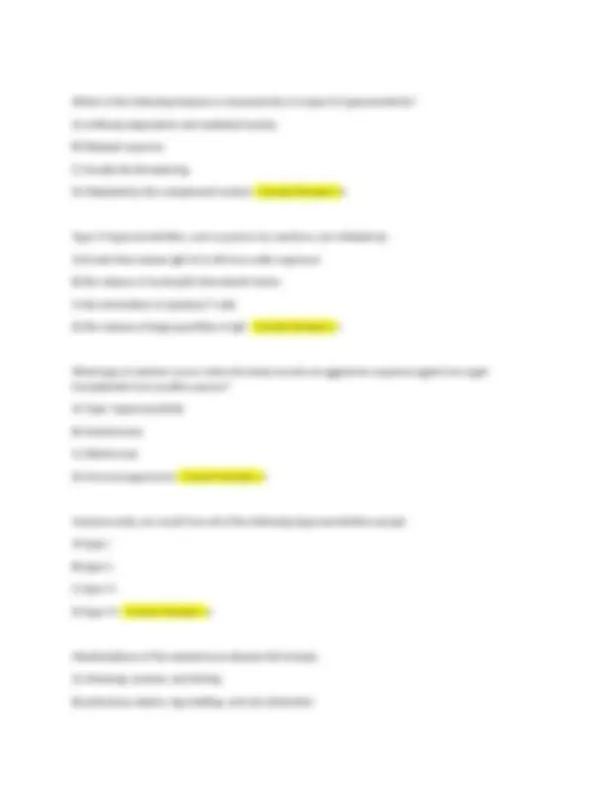
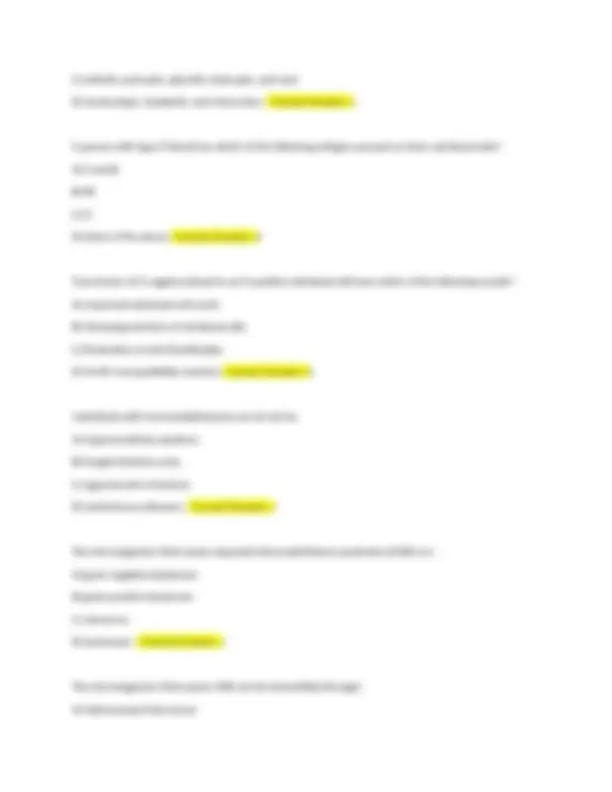
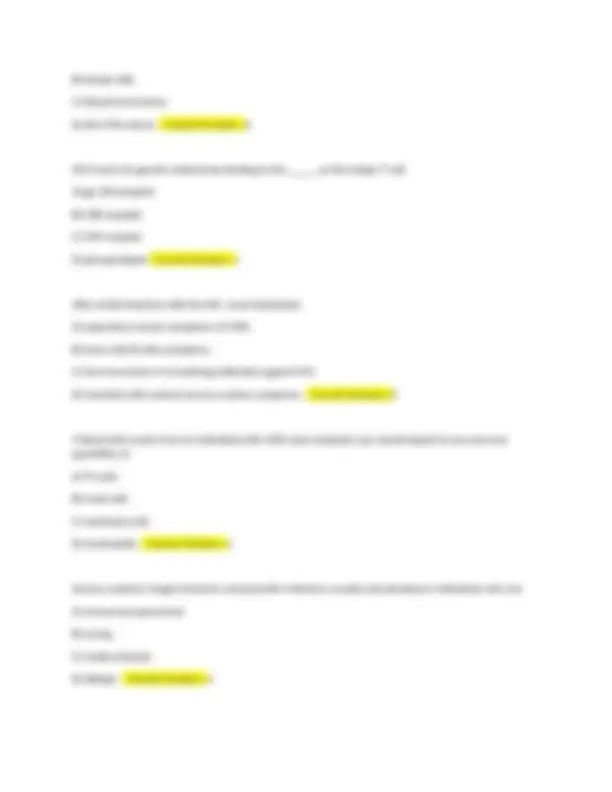
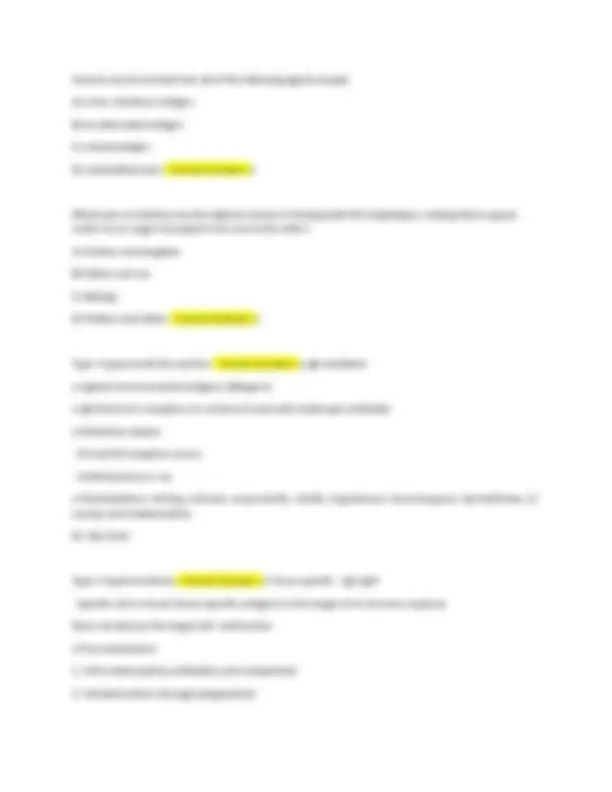
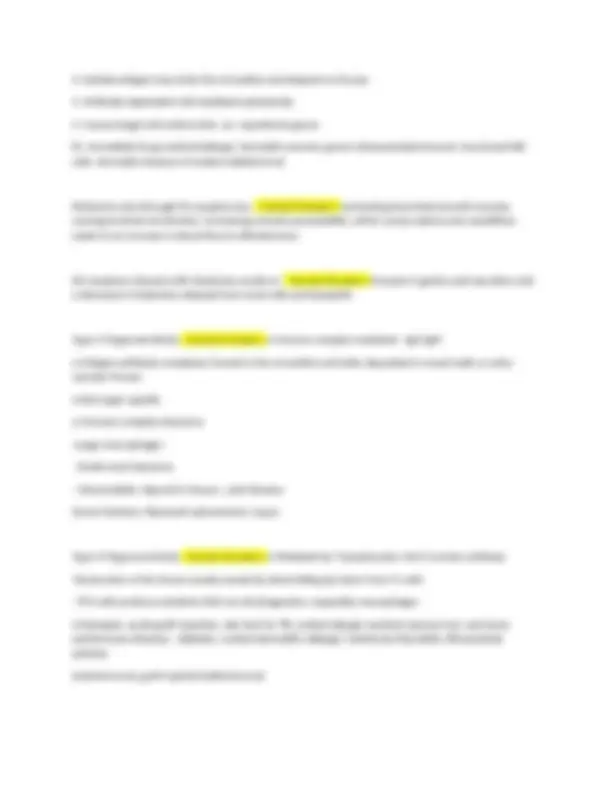
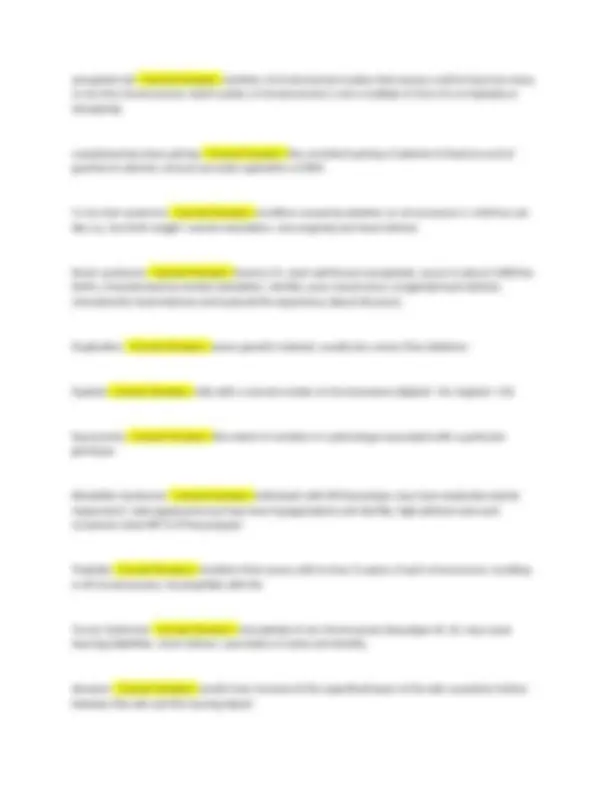
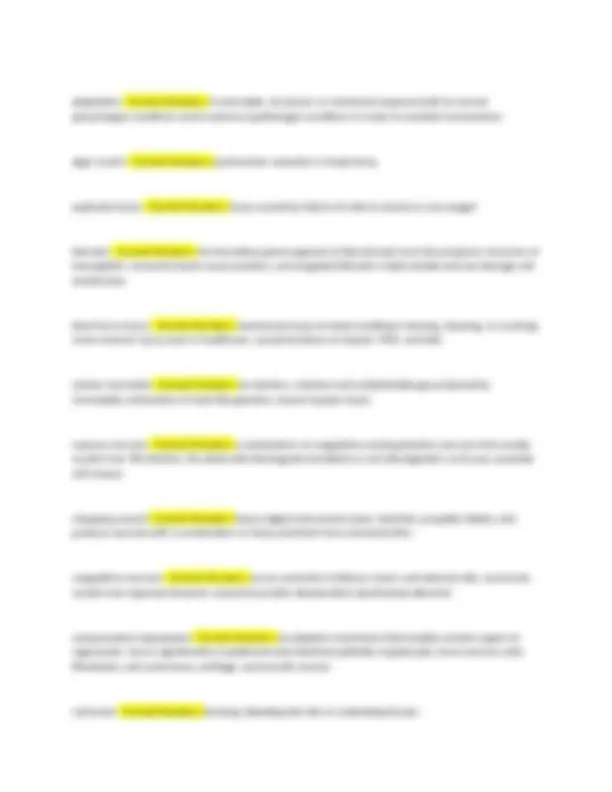
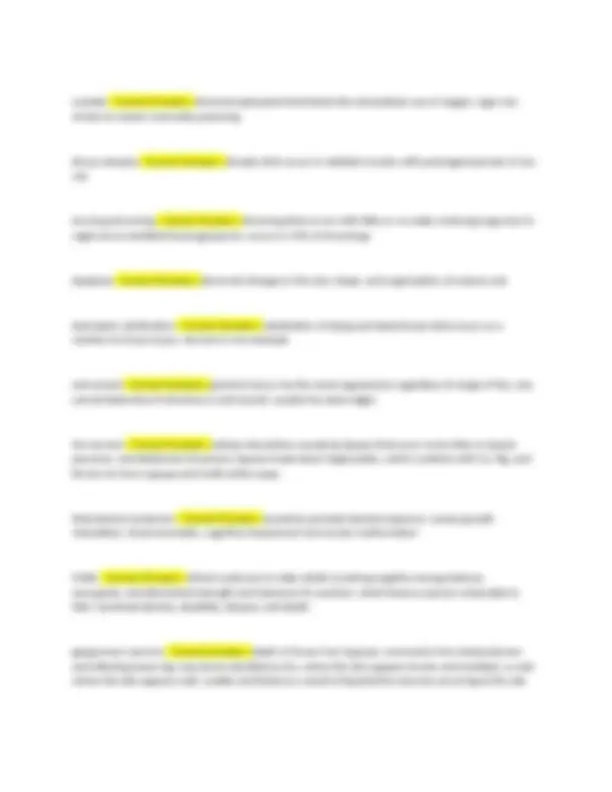
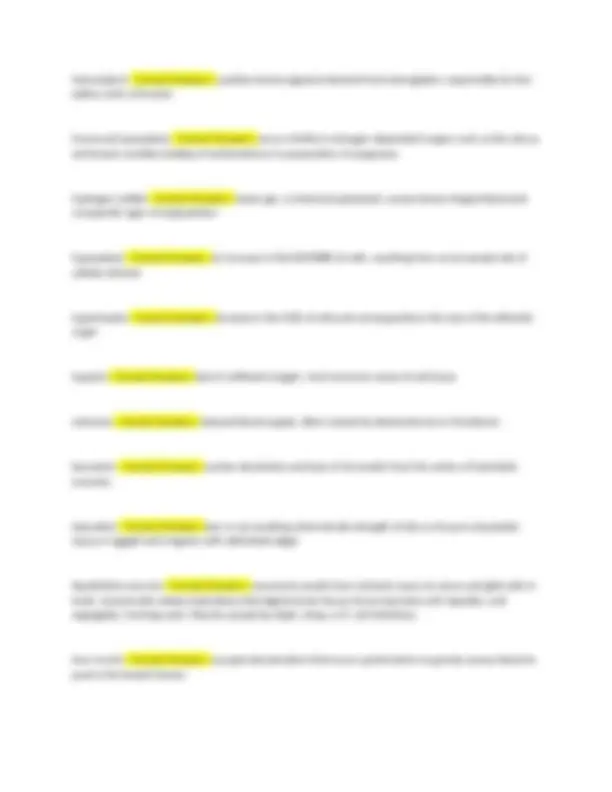
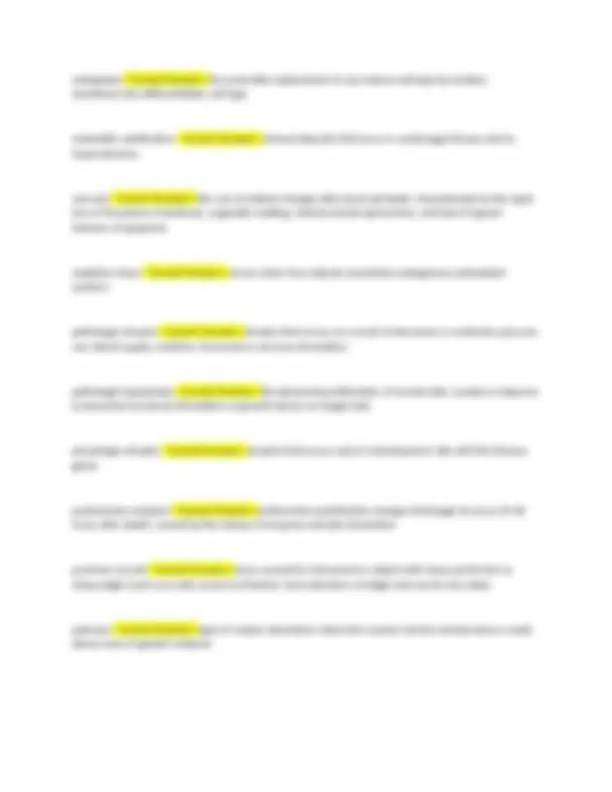
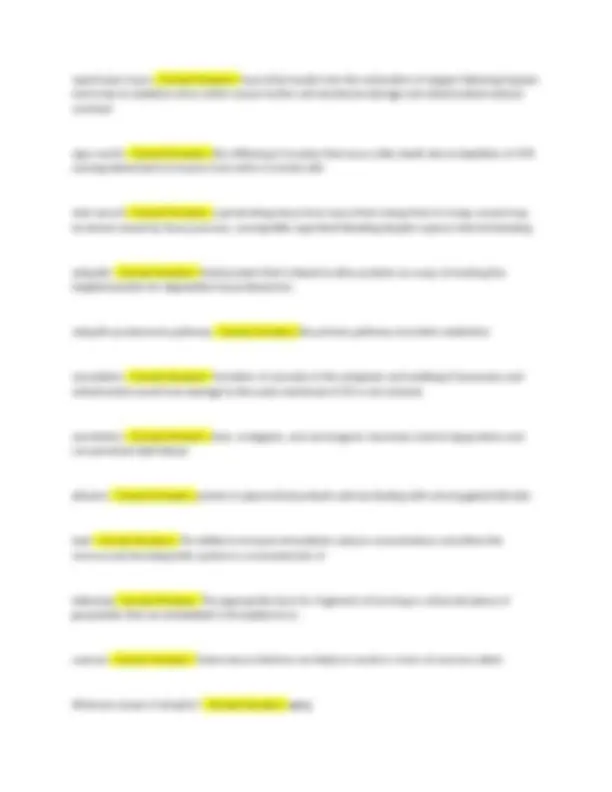
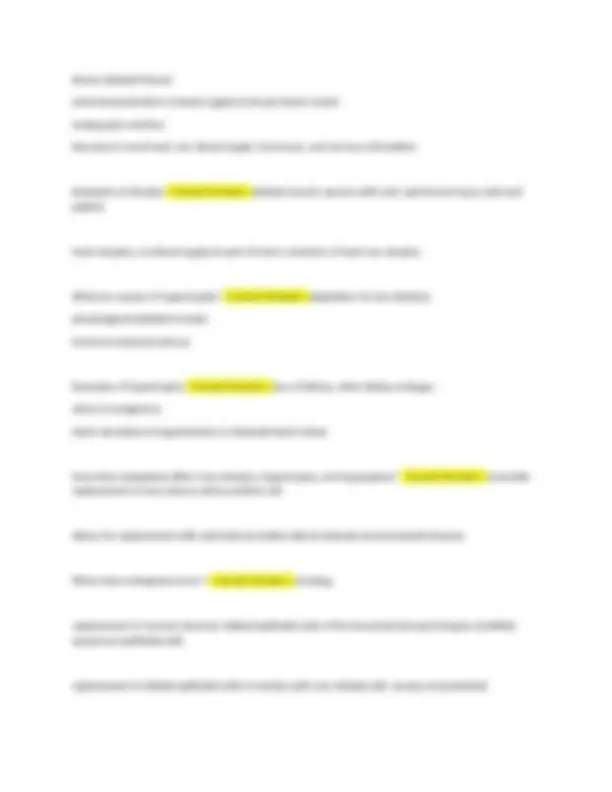
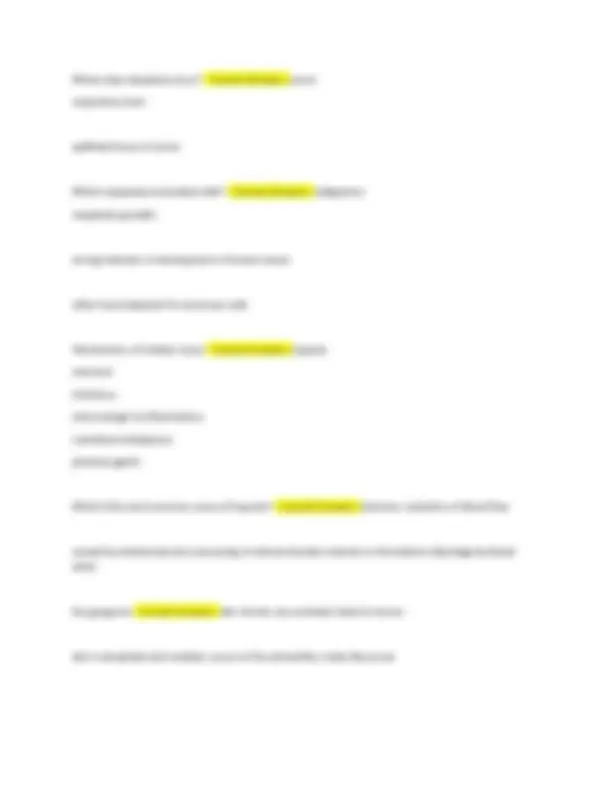
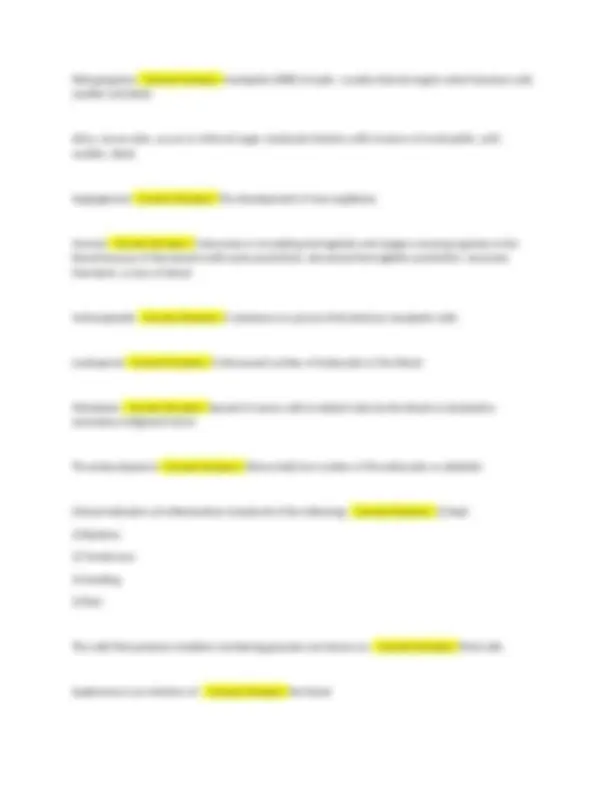
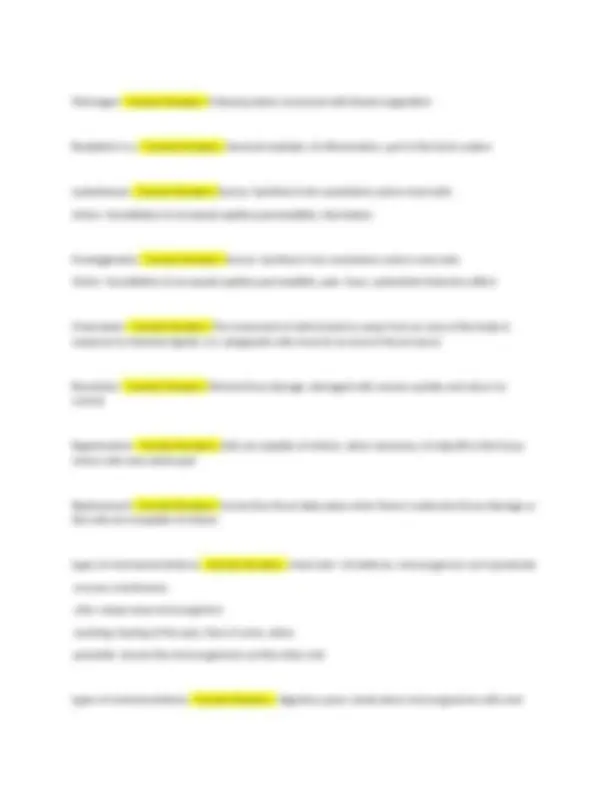
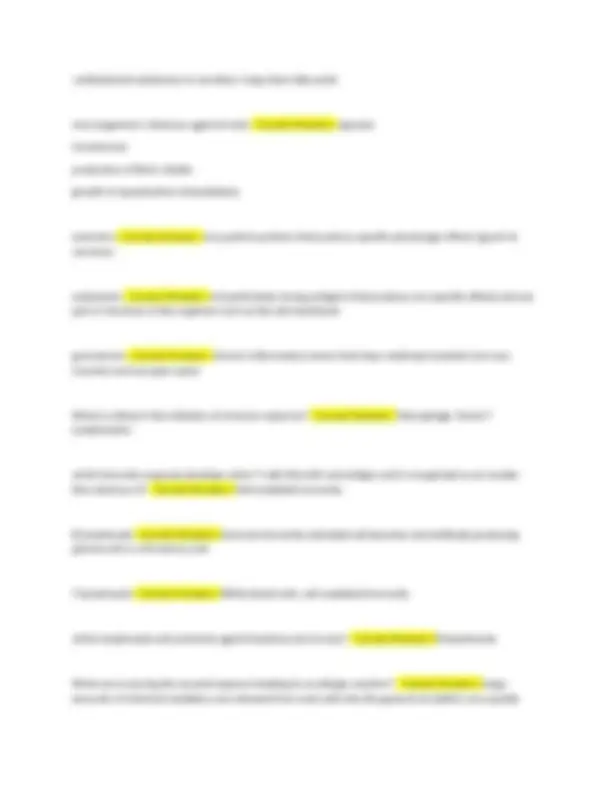
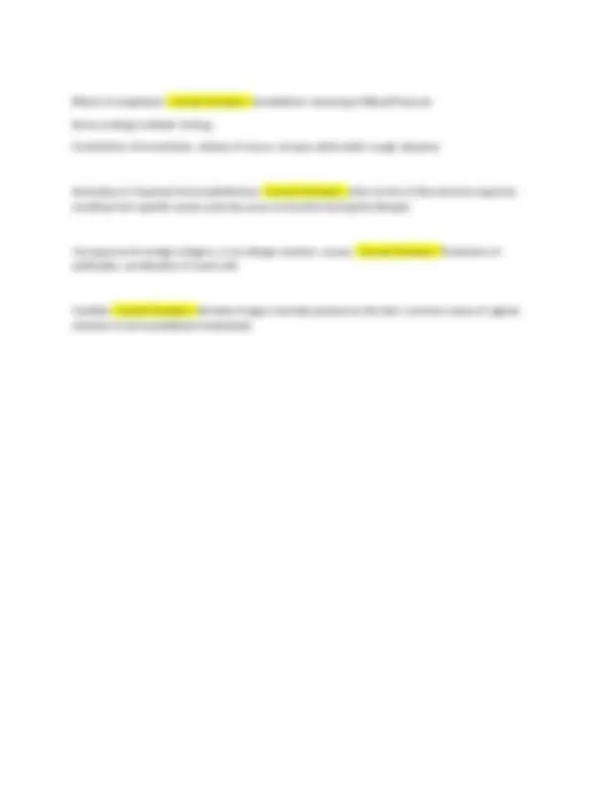


Study with the several resources on Docsity

Earn points by helping other students or get them with a premium plan


Prepare for your exams
Study with the several resources on Docsity

Earn points to download
Earn points by helping other students or get them with a premium plan
Community
Ask the community for help and clear up your study doubts
Discover the best universities in your country according to Docsity users
Free resources
Download our free guides on studying techniques, anxiety management strategies, and thesis advice from Docsity tutors
A set of multiple-choice questions and answers related to the topic of pathophysiology. It covers various concepts including chromosomal abnormalities, genetic disorders, cellular adaptation, and injury. The questions are designed to test understanding of key principles and mechanisms in the field.
Typology: Exams
1 / 41

This page cannot be seen from the preview
Don't miss anything!


































[COMPANY NAME] [Company address]
An ordered photographic display of a set of chromosomes from a single cell is a(n): A) metaphase spread. B) autosomal spread. C) karyotype. D) anaphase spread. - Correct Answers: c An error in which homologous chromosomes fail to separate during meiosis is termed: A) aneuploidy. B) nondisjunction. C) polyploidy. D) anaplasia. - Correct Answers: b A somatic cell that does not contain a multiple of 23 chromosomes is called: A) an aneuploid cell. B) a euploid cell. C) a polyploidy cell. D) a haploid cell. - Correct Answers: a A 20-year-old pregnant female gives birth to a stillborn child. Autopsy reveals that the fetus has 92 chromosomes. Which of the following describes this condition? A) Euploidy B) Triploidy C) Tetraploidy D) Aneuploidy - Correct Answers: c If a person is a chromosomal mosaic, the person may: A) be a carrier of the genetic disease. B) have a mild form of the genetic disease. C) have two genetic diseases.
A) sex-linked dominant trait. B) sex-influenced trait. C) sex-limited trait. D) sex-linked recessive trait. - Correct Answers: d A 50-year-old male was recently diagnosed with Huntington disease. Transmission of this disease is associated with: A) penetrance. B) recurrence risk. C) expressivity. D) delayed age of onset. - Correct Answers: d People who have neurofibromatosis will show varying degrees of the disease; this is because of the genetic principle of: A) penetrance. B) expressivity. C) dominance. D) recessiveness. - Correct Answers: b Cystic fibrosis is caused by an _____ gene. A) X-linked dominant B) X-linked recessive C) autosomal dominant D) autosomal recessive - Correct Answers: d To express a polygenic trait: A) genes must interact with the environment. B) several genes must act together. C) multiple mutations must occur in the same family.
D) in situ cloning must occur. - Correct Answers: b The gradual increase in height among the human population over the past 100 years is an example of: A) polygenic trait. B) multifactorial trait. C) crossing over. D) recombination. - Correct Answers: b A couple has three offspring: one child with an autosomal dominant disease trait and two who are normal. The father is affected by the autosomal dominant disease, but the mother does not have the disease gene. What is the recurrence risk of this autosomal dominant disease for their next child? A) 50% B) 33% C) 25% D) Impossible to determine - Correct Answers: a A 12-year-old male is diagnosed with Klinefelter syndrome. His karyotype would reveal which of the following? A) XY B) XX C) XYY D) XXY - Correct Answers: d A 5-year-old male presents with mental retardation and is diagnosed with Fragile X syndrome. Which of the following is most likely to cause this syndrome? A) Translocation B) Inversion C) Nondisjunction D) Duplication at fragile sites - Correct Answers: d
B) A pattern of skipped generations is rare. C) Males are gene carriers. D) Mothers usually transmit the disease to their daughters. - Correct Answers: a The process by which RNA directs the synthesis of protein is called: A) termination. B) transcription. C) promotion. D) translation. - Correct Answers: d A 15-year-old female is diagnosed with Prader-Willi syndrome. This condition is an example of: A) gene imprinting. B) an autosomal recessive trait. C) an autosomal dominant trait. D) a sex-linked trait. - Correct Answers: a Adaptive cellular mechanisms function to: A) treat disease. B) protect cells from injury. C) prevent cellular aging. D) speed up cellular death. - Correct Answers: b Cellular atrophy involves: A) an increase in cell size. B) a decrease in cell size. C) an increase in the number of cells. D) a decrease in the number of cells. - Correct Answers: b The process of cellular atrophy is accomplished through which of the following processes?
A) Loss of fluid B) Decreased cell division C) Inhibition of enzyme formation D) Formation of autophagic vacuoles - Correct Answers: d In compensatory hyperplasia, growth factors stimulate cell division in response to: A) tissue loss. B) decreased hormonal stimulation. C) ischemia. D) puberty. - Correct Answers: a Pathologic hyperplasia can lead to: A) neoplasia (cancer). B) dysplasia. C) metaplasia. D) all of the above. - Correct Answers: d In response to an increased workload, such as that caused by high blood pressure (hypertension), myocardial cells in the left ventricle will adapt through the process of: A) atrophy. B) hypertrophy. C) hyperplasia. D) dsyplasia. - Correct Answers: b The process of muscle hypertrophy involves an increase in: A) cell division. B) water accumulation. C) protein synthesis. D) plasma membrane thickness. - Correct Answers: c
D) autodigestion of cells. - Correct Answers: d Free radical injury can be caused by all of the following factors except: A) tissue damage by antioxidants. B) radiation injury. C) tissue reperfusion following ischemia. D) enzymatic metabolism of chemicals. - Correct Answers: a Vitamin E, vitamin C, and beta-carotene are molecules in food that act as: A) poisons. B) free radicals. C) receptor blockers. D) antioxidants. - Correct Answers: d Lead poisoning affects nervous system function by which of the following mechanisms? A) Lead blocks oxygen delivery to the brain by binding with hemoglobin. B) Lead interferes with neurotransmitter release. C) Lead causes nervous tissue necrosis. D) Lead inhibits fatty acid oxidation in the brainstem. - Correct Answers: b The population group most vulnerable to lead poisoning is: A) children. B) pregnant women. C) male adolescents. D) the elderly. - Correct Answers: a Which of the following organs is most frequently affected by ethanol injury? A) Heart B) Kidneys
C) Liver D) Stomach - Correct Answers: c Which of the following molecules accumulates in liver cells as a result of alcohol abuse? A) Water B) Fat (lipids) C) Protein D) Iron - Correct Answers: b Fetal exposure to alcohol during pregnancy can result in: A) low birth weight. B) mental retardation. C) death. D) all of the above. - Correct Answers: d Why is carbon monoxide exposure a life-threatening condition? A) Carbon monoxide binds to hemoglobin and prevents normal oxygen transport to tissues. B) Inhalation of carbon monoxide interferes with oxygen diffusion in the lungs. C) Carbon monoxide causes the release of toxic amounts of iron from the tissues. D) Carbon dioxide removal from the tissues is inhibited. - Correct Answers: a A contusion injury results in: A) tearing of the skin. B) the removal of superficial skin layers. C) entrance and exit wounds. D) bleeding in the skin or underlying tissues. - Correct Answers: d What are the primary factors contributing to oncosis from hypoxic injury? A) Decrease in ATP production and sodium movement into the cell
A) Glucose B) Sodium C) Albumin D) Water - Correct Answers: c Edema can result from all of the following alterations except: A) decreased capillary hydrostatic pressure. B) decreased capillary oncotic pressure. C) lymphatic obstruction. D) increased capillary membrane permeability. - Correct Answers: a Symptoms of dehydration include: A) decreased urine output. B) increased skin turgor. C) increased blood pressure. D) edema. - Correct Answers: a What is the purpose of vasodilatation and increased vascular permeability during inflammation? A) To bring white blood cells to the area of injury B) To transport inflammatory chemicals to the area of injury C) To dilute toxins D) All of the above - Correct Answers: d The first cell to react to tissue injury is the: A) macrophage. B) mast cell. C) fibroblast. D) neutrophil - Correct Answers: b
Which of the following stimuli are known to induce mast cell degranulation? A) Thermal injury B) The presence of toxins C) Immunologic tissue injury D) All of the above - Correct Answers: d The process of a phagocyte squeezing through retracted endothelial cells to enter into the tissues is called: A) fusion. B) diapedesis. C) phagocytosis. D) margination. - Correct Answers: b Prior to engulfment of a bacterium during phagocytosis, which of the following events must occur? A) Release of lysosomal enzymes B) Fusion C) Recognition and adherence D) Formation of a phagolysosome - Correct Answers: c In addition to phagocytosis, which of the following functions are also performed by macrophages? A) Release of growth factors and stimulating new blood vessel growth B) Destroying circulating antibodies C) Inhibiting inflammation D) Promotion of blood clotting - Correct Answers: a A monocyte is a circulating white blood cell that transforms into which of the following cells once it enters the tissue during an inflammatory response? A) Neutrophil B) Macrophage
One systemic manifestation of the acute inflammatory response is fever, which is induced by several mediators, including: A) histamine. B) interferon. C) interleukin 1. D) nitrous oxide. - Correct Answers: c Which of the following cells plays an active role in collagen deposition during wound contraction and scar tissue formation? A) Mast cell B) Macrophage C) Fibroblast D) Osteocyte - Correct Answers: c If the surface barriers such as the skin or mucus membranes are breached, the second line of defense in innate immunity is the: A) lymph node. B) lymphocyte response. C) inflammatory response. D) memory cells. - Correct Answers: c If a person has innate resistance to a disease, the person has _____ immunity. A) natural B) native C) active acquired D) passive - Correct Answers: a A child fell off the swing and scraped her knee. The injured area becomes red and painful. Which of the following would also occur? A) Vasoconstriction
B) Decreased RBC concentration at injured site C) Fluid movement from tissue to vessels D) Edema at injured site - Correct Answers: d The mast cell, a major activator of inflammation, initiates the inflammatory response through the process of: A) cytokinesis. B) endocytosis. C) degranulation. D) hemolysis. - Correct Answers: c A 13-year-old female fell on her knee while skating. The area became inflamed and sore to touch. Which of the following would result from activation of the plasma system secondary to her injury? A) Mast cell degranulation B) Release of cellular products C) Cellular infiltration D) Pathogenic invasion - Correct Answers: c A 35-year-old male is diagnosed with lobar pneumonia (lung infection). Which of the following exudates would be present in highest concentration at the site of this advanced inflammatory response? A) Serous B) Purulent C) Hemorrhagic D) Fibrinous - Correct Answers: d In contrast with the inflammatory response, the immune response: A) is more effective at fighting microorganisms. B) is faster. C) recognizes specific invaders. D) has no memory. - Correct Answers: c
C) Pollen D) The body's own tissue - Correct Answers: d The condition in which the immune cells attack the individual's own tissues as if they were invaders is called: A) alloimmunity. B) autoimmunity. C) hypersensitivity. D) graft rejection. - Correct Answers: b Immune cells distinguish "self" from "nonself" by recognizing: A) cellular RNA. B) major histocompatibility antigens. C) different types of phospholipids in a cell's membrane. D) "nonself" enzymes secreted by foreign cells. - Correct Answers: b Major histocompatibility class I (MHC I) antigens are found on which of the following cells? A) Red blood cells B) B lymphocytes and macrophages only C) All body cells except for red blood cells D) Liver, heart, and bone marrow cells only - Correct Answers: c Which of the following cells has the capacity to produce antibodies during an immune response? A) Plasma cells B) T cells C) Memory cells D) Pluripotent cells - Correct Answers: a
Which cell ingests microorganisms for the purposes of presenting their antigen to the immune system and activating an immune response? A) Helper T cell B) Mast cell C) Neutrophil D) Macrophage - Correct Answers: d Which cell stimulates both the cell-mediated and humoral immune responses? A) Plasma cells B) Cytotoxic T cells C) B lymphocytes D) Helper T cells - Correct Answers: d CD4 receptors that bind to the surface of macrophages and B cells are found on: A) helper T cells. B) cytotoxic T cells. C) plasma cells. D) the human immunodeficiency virus (HIV). - Correct Answers: a Which process confers long-lasting immunity against a specific organism? A) Production of memory cells B) Activation of macrophages C) Activation of cytotoxic T cells D) Activation of the inflammatory response - Correct Answers: a The predominant antibody of a typical secondary immune response is: A) IgG. B) IgM. C) IgE.